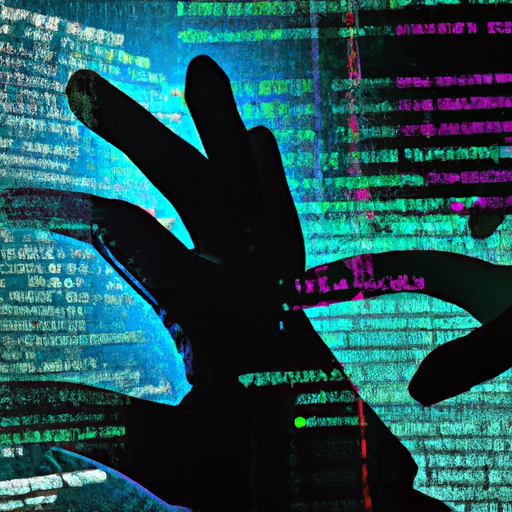What Is Digital Forensics?
Digital forensics is a field that involves the investigation and analysis of digital devices and data to gather evidence for legal proceedings. In today’s modern world, where technology plays a prominent role in our lives, understanding digital forensics is becoming increasingly important. By examining digital devices such as computers, smartphones, and tablets, experts in this field can uncover crucial information that can help solve crimes, protect individuals, and ensure justice is served. So, if you’ve ever wondered about the fascinating world of digital forensics, buckle up as we take you on an informative journey into this intriguing field.
What Is Digital Forensics?
Definition
Digital forensics refers to the process of collecting, analyzing, and preserving electronic evidence from computers, digital devices, and networks. It involves the use of specialized techniques and tools to investigate and identify digital artifacts that can be valuable for legal or investigative purposes. Essentially, digital forensics is the application of traditional forensic techniques to digital media and information systems.
History
The field of digital forensics traces its origins back to the early 1980s when computer crimes started to become more prevalent. In those early days, investigators primarily focused on the recovery of data from magnetic storage media, such as floppy disks and hard drives. As technology evolved, so did the field of digital forensics. The widespread use of the internet, the ubiquity of smartphones, and the rapid expansion of digital storage have all contributed to the ever-growing demand for digital forensic expertise.
Importance
Digital forensics plays a critical role in modern law enforcement, corporate security, and legal proceedings. In criminal investigations, digital evidence often provides valuable insights into the activities and intentions of individuals involved. It can help establish the timeline of events, identify suspects, and uncover hidden information. Similarly, in corporate settings, digital forensics is essential for identifying internal data breaches, intellectual property theft, and employee misconduct. Without digital forensics, crucial evidence may go undetected, leading to incomplete or compromised investigations.
Key Concepts
To understand digital forensics, it is essential to grasp a few key concepts. One such concept is the idea of electronic evidence, which encompasses any digital information that can be used to establish facts in a legal proceeding. Examples of electronic evidence include emails, instant messages, databases, internet browsing history, and even metadata associated with files. Another important concept is the volatile nature of digital evidence. Digital data can easily be modified, deleted, or destroyed, making time of the essence in preserving and collecting evidence. Finally, the concept of chain of custody is crucial in digital forensics, as it ensures the integrity and admissibility of evidence by documenting its movement and handling from the time of collection to its presentation in court.
Types of Digital Forensics
Digital forensics can be categorized into various domains, each with its own specific focus and techniques. Some of the primary types of digital forensics include:
- Computer Forensics: This branch deals with the examination of computer systems, including desktops, laptops, and servers, to recover and analyze digital evidence. It involves techniques such as data recovery, password cracking, and file system analysis.
- Network Forensics: Network forensics involves capturing and analyzing network traffic to determine any unauthorized activity, security breaches, or information leakage. It focuses on identifying network-based evidence, such as IP addresses, packet analysis, and network log analysis.
- Mobile Device Forensics: With the proliferation of smartphones and tablets, mobile device forensics has become increasingly critical. It involves the extraction and analysis of data from mobile devices, such as call logs, text messages, browsing history, and GPS data.
- Memory Forensics: Memory forensics deals with the analysis of volatile memory (RAM) to extract information that may not be available in other areas, such as passwords, encryption keys, and running processes. This type of analysis can be useful in live investigations or when physical access to the target system is not possible.
Tools and Technologies
Digital forensics relies heavily on a wide range of specialized tools and technologies that aid in evidence collection, preservation, and analysis. Some of the commonly used tools in digital forensics include:
- EnCase: EnCase is a widely used commercial forensic software suite that allows investigators to acquire, analyze, and present digital evidence. It provides comprehensive features for file system analysis, keyword searching, and metadata extraction.
- FTK (Forensic Toolkit): FTK is another popular forensic software suite that enables investigators to perform efficient and effective investigations. It offers advanced search capabilities, email analysis, and database examination.
- Autopsy: Autopsy is an open-source digital forensics tool that provides a user-friendly interface for analyzing disk images, smartphones, and other digital media. It integrates with various other tools and allows for complex keyword searches and timeline analysis.
- Wireshark: Wireshark is a powerful network protocol analyzer that captures and analyzes network traffic. It is widely used in network forensics to identify malicious activities, security breaches, and unauthorized access.
Digital Forensic Process
The digital forensic process consists of a series of steps that guide investigators in collecting, analyzing, and presenting electronic evidence. The process generally follows these stages:
- Identification and Preparation: In this initial phase, investigators identify the digital media or device that may hold relevant evidence and take the necessary precautions to preserve its integrity. This includes securing the scene, disconnecting the device from networks, and ensuring the use of write-blocking tools to prevent accidental modification of data.
- Acquisition: In this stage, investigators make a bit-by-bit copy of the original media or device to ensure that the integrity and authenticity of the evidence are maintained. This process, known as imaging or cloning, creates a forensic duplicate that can be analyzed without altering the original data.
- Analysis: During the analysis phase, investigators examine the acquired data using appropriate tools and techniques. This may involve keyword searching, file system analysis, metadata extraction, and data recovery. The goal is to identify and extract relevant evidence while maintaining a clear and documented chain of custody.
- Reporting and Presentation: Once the analysis is complete, investigators compile their findings into a comprehensive report that includes a detailed account of the evidence, relevant artifacts, and conclusions. This report may be used for legal proceedings, internal investigations, or other purposes as required.
Legal Considerations
Digital forensics operates within a legal framework that governs how investigators can collect and use electronic evidence. Laws and regulations may vary depending on the jurisdiction, but some common legal considerations include:
- Chain of Custody: The chain of custody ensures the admissibility of evidence by documenting its movement and handling throughout the investigation. Investigators must maintain detailed records of who had control of the evidence at all times to establish its integrity and prevent tampering.
- Privacy and Consent: The collection of electronic evidence can potentially infringe on individual privacy rights. Investigators must obtain appropriate legal authorization, such as search warrants or consent, before conducting examinations or seizing digital media.
- Laws and Regulations: Digital forensics professionals must be well-versed in the legal requirements specific to their jurisdiction. This includes knowledge of laws surrounding hacking, data privacy, intellectual property, and computer crime.
Challenges and Limitations
Despite its importance and advancements, digital forensics faces several challenges and limitations. Some common challenges include:
- Encryption: The increasing use of encryption techniques presents a significant challenge to digital forensics investigators. Encrypted data is designed to be unreadable without the appropriate decryption key, making it difficult to access and analyze.
- Volume of Data: The sheer volume of digital data generated every day overwhelms investigators. Searching through vast amounts of data manually is time-consuming and often inefficient. Automation and advanced search algorithms can help mitigate this challenge to some extent.
- Evolving Technology: As technology continues to evolve, so do the challenges for digital forensics. New devices, applications, and storage methods emerge, requiring constant updates and training for digital forensics professionals.
Future Trends
The field of digital forensics is constantly evolving to keep pace with technological advancements and emerging threats. Some future trends that may shape the field include:
- Cloud Forensics: With the increasing adoption of cloud computing, digital forensics will need to adapt to investigate and recover evidence stored in the cloud. Techniques and tools for cloud forensics are likely to become more prevalent.
- Internet of Things (IoT) Forensics: As IoT devices become ubiquitous, digital forensics will need to evolve to investigate IoT-related crimes. Collecting and analyzing data from numerous interconnected devices will present new challenges and require specialized skills.
- Machine Learning and Artificial Intelligence: Utilizing machine learning and AI algorithms in digital forensics can help automate repetitive tasks, analyze large volumes of data, and detect patterns that may be missed by human investigators.
- Privacy and Ethical Considerations: With the growing concern over privacy and data protection, the future of digital forensics will involve a careful balance between investigative needs and individual rights. Techniques for anonymizing and securely handling personal data are likely to gain importance.
In conclusion, digital forensics plays a vital role in investigating and analyzing digital evidence for legal and investigative purposes. Through various types of digital forensics, the use of specialized tools and technologies, and a systematic forensic process, digital forensics professionals help uncover hidden information and provide valuable insights in a wide range of investigations. Despite challenges and limitations, the future of digital forensics looks promising, with continued advancements in technology and an increasing need for expertise in this field.








